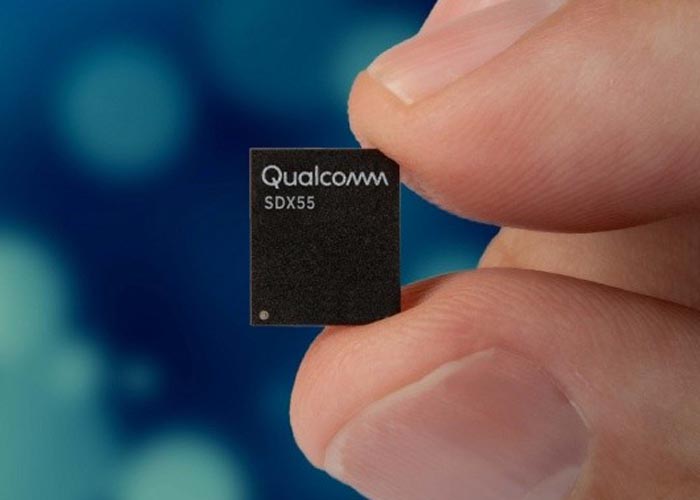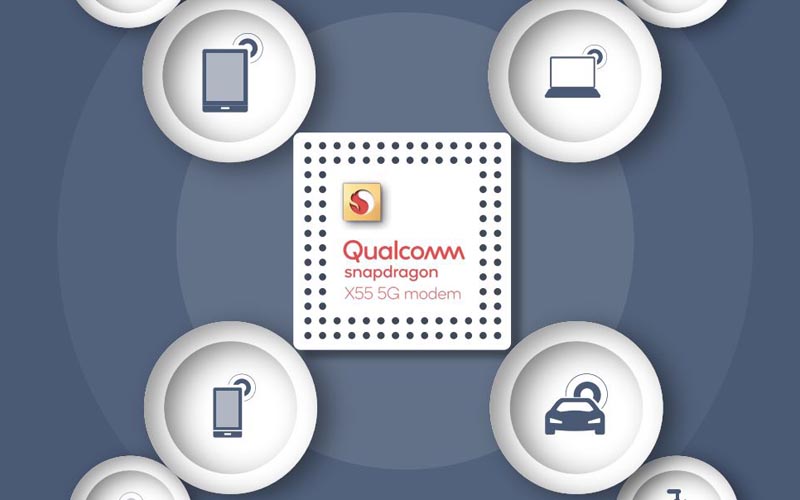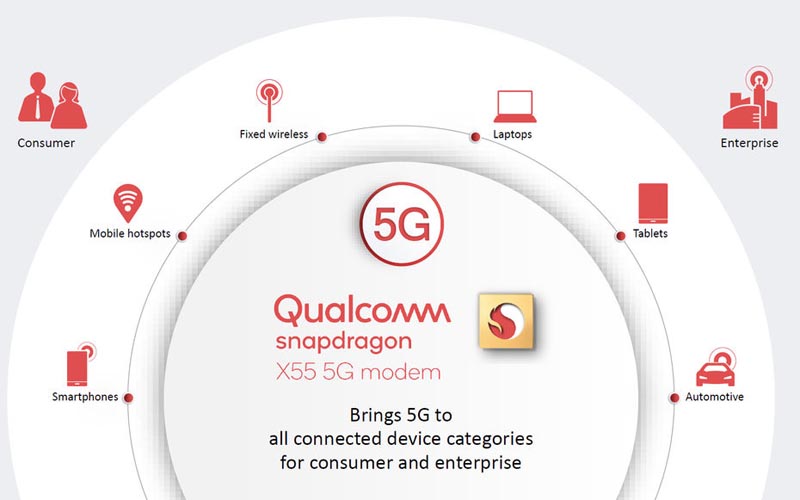Yesterday, Qualcomm introduced the second generation of its 5G modem, the Snapdragon X55. The X55 modem can use 5G in a variety of frequency ranges and allows speeds of up to 7 gigabits per second. It supports both 5G standalone networks and 5G non-standalone networks. The Snapdragon X55 modem is also backwards compatible with LTE, UMTS and GSM (4G, 3G and 2G) in the initial phase of 5G.
As the successor to X50, the Snapdragon X55 modem is already Qualcomm’s second 5G modem. The X55 modem is prepared for 4G / 5G spectrum sharing, allowing network operators to easily switch from LTE to 5G. The supported frequency ranges range from the millimeter-wave range (above 26 GHz) to the frequency range below 6 GHz. The range between 3.4 and 3.8 GHz used in Germany and Europe to launch 5G is also supported by the Qualcomm Snapdragon X55.
The Qualcomm Snapdragon X55 modem is also up to date in the LTE network. With LTE Cat22, up to 2.5 Gbps can be used in the fourth-generation mobile network. The prerequisite for such high speeds is of course that the network operator uses sufficient spectrum and bundles this via carrier aggregation. Even the highest possible modulation and the use of 4 × 4 MIMO significantly increases the speed.
First commercial handsets with the new Snapdragon X55 5G modem will hit the market in late 2019, according to Qualcomm. For the first generation of 5G smartphones, which will probably appear in mid-2019, the modem comes a little too late. It might still be worthwhile to wait a bit and not to access the very first 5G smartphones, because the first generation of new mobile modems is experience quite energy hungry and quickly outdated.


